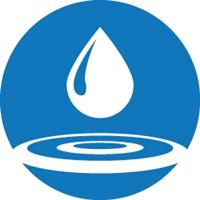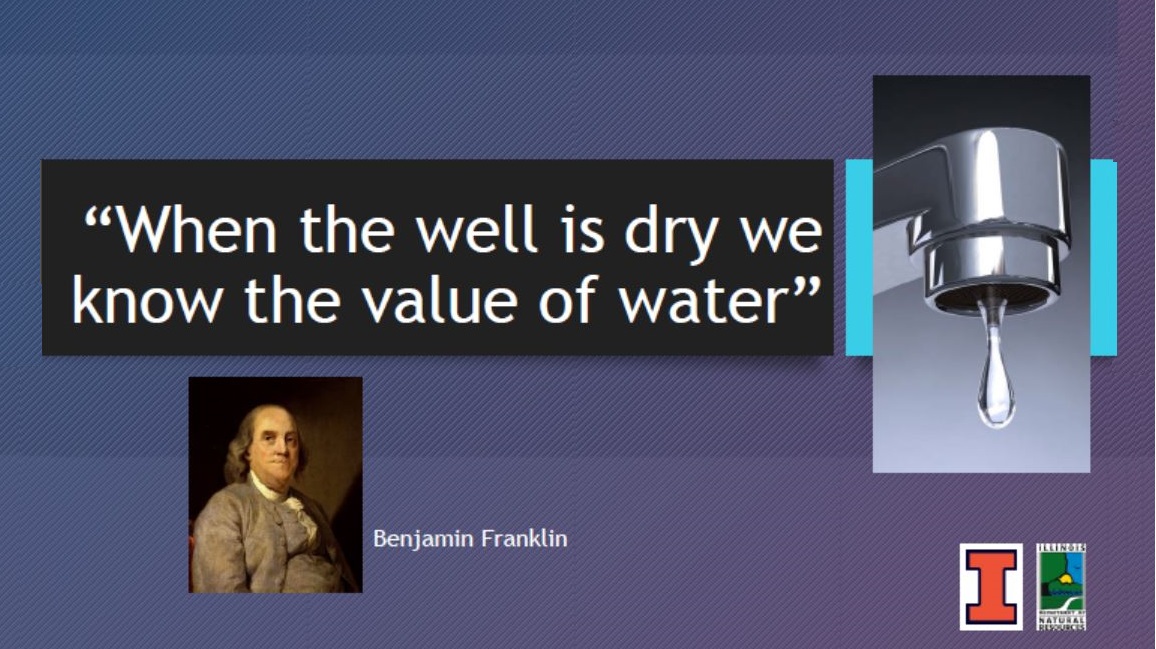Water Conservation Practices
The simple act of turning on the cold water faucet uses energy. Energy is needed to pump water from a well or through city pipes. The water that flows down the drain also uses energy as it is treated in a septic system or at a larger scale wastewater treatment facility. This means that saving water will save energy and resources.
Each person is estimated to use 100 gallons of water a day. This is placing pressure on fresh water resources. In this area we rely on a mix of water supplies, from deep wells, shallow wells, rivers and Lake Michigan. Lake Michigan water is shared among several US states and Canada, making it subject to limits. All this means we need to integrate water conservation into our home, school, business and social life.
It's easier than it sounds. It is estimated that 50% of the water used in the home is used in the bathroom.Teach kids to turn off the faucet when they brush their teeth, and switch to low flow shower heads. There are several area bath and kitchen suppliers that offer faucets that reduce water use. The plain truth is that each of us has access to ways to reduce the amount of water we use.
Did you know that it takes 660 gallons of water to supply 1,000 square feet of lawn with 1 inch of water. Water lawns only when necessary. Let bluegrass lawns go dormant during hot, dry periods. If watering, do so in the early morning to avoid evaporation losses and increased disease potential. Water the lawn deeply and infrequently, not every day. Follow all local watering restrictions. Sweep sidewalks and driveways, instead of washing them down with the hose.
In the garden, use drip irrigation or soaker hoses to apply water slowly and directly to the soil. Hand water rather than using sprinklers. Use pistol-grip nozzles on hoses and turn off the faucet tightly to prevent leakage. Avoid sprinklers that produce a fine mist that allow water to be lost by wind and evaporation. Reduce evaporation losses from gardens by using an organic mulch between rows. Collect and store water from roof gutters when possible to use for plant watering. Keep the stored water in closed containers to prevent mosquito-breeding sites from developing. For trees, use hose or container drip irrigation.
Do not wash cars when water is in short supply. If washing the car, use a bucket of soapy water to wash it, and then give it one quick rinse. Taking it to a car wash may save water because many commercial installations recycle the water.
Beyond the tap, there is the water that falls from the sky. This water is often lost as it hits roofs, pavements or simply travels too fast across the lawn to be absorbed into the soil and eventually replenish aquifers. The challenge is to slow it or capture it and use it instead of using our drinking water. Businesses and local governments are putting in bioswales to slow water flowing from parking lots and roadways. Homes can accomplish this goal with rain gardens, or slightly shallow areas located near drain spouts where rooftop rain is held long enough to soak into the soil and root systems.
For additional information on water conservation tips, facts, and resources visit WaterUseItWisely.com.
For information on local water resources and a report on wells drying up, please click this link or the graphic below:

©2010 Will County EEC. All Rights Reserved | Web site design and development by Americaneagle.com
|